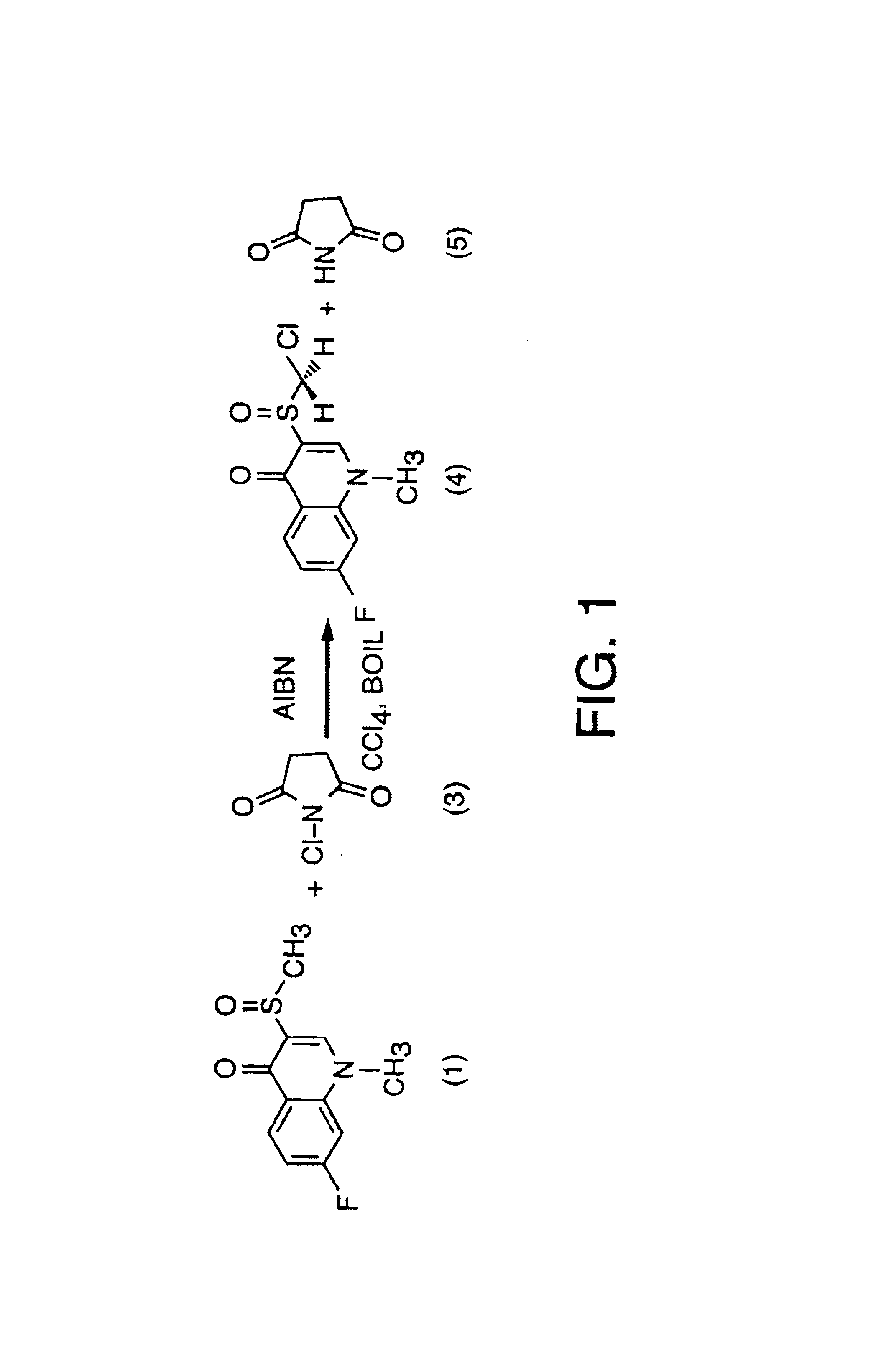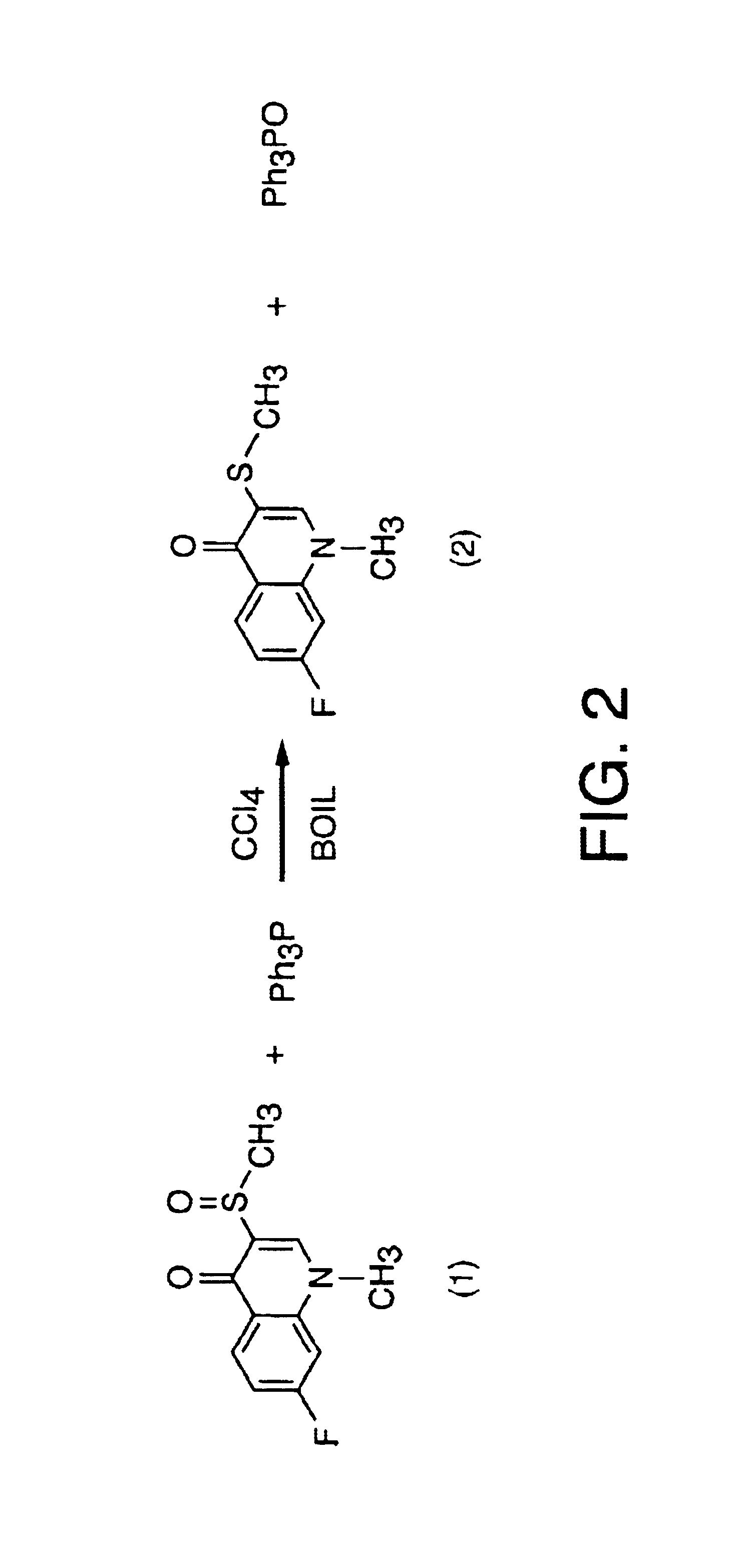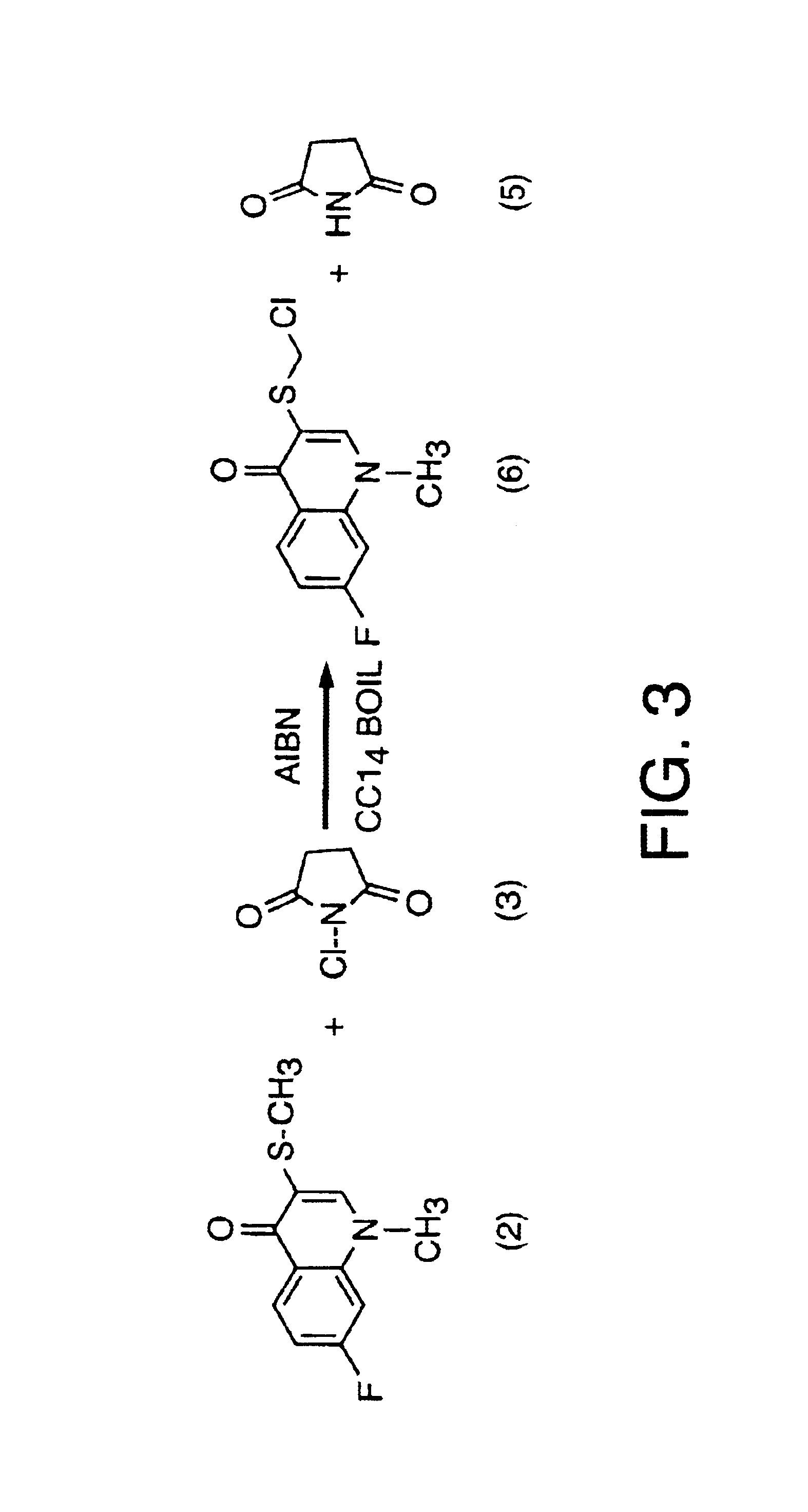Use of monochloroflosequinan in the treatment of sexual dysfunction
a monochloroflosequinan and treatment method technology, applied in the field of sexual dysfunction treatment, can solve the problems of high incidence of erectile insufficiency among diabetics, inability to obtain or maintain sufficient erection pressure, and inability to achieve sufficient erection pressur
- Summary
- Abstract
- Description
- Claims
- Application Information
AI Technical Summary
Benefits of technology
Problems solved by technology
Method used
Image
Examples
example 1
[0330]For reference, FIG. 13 outlines (as a flowchart) the syntheses presented in this section. This example presents a one-step protocol for the synthesis of 3-chloromethylsulfinyl-7-fluoro-1-methyl-4-quinolone (racemic monochloroflosequinan) via the direct chlorination of 7-fluoro-1-methyl-3-methylsulfinyl-4-quinolone (racemic flosequinan) according to the synthetic scheme set out in FIG. 1 and FIG. 26. This overall synthesis is described in more detail according to the following reactions.
[0331]900 ml of anhydrous carbon tetrachloride and 25 g (0.015 mol) of 7-fluoro-1-methyl-3-methylsulfinyl-4-quinolone (1) (racemic flosequinan) were placed in a two L, round bottom reaction flask (equipped with a mechanical stirrer, a reflux condenser with gas outlet adapter, a thermometer and a gas inlet adapter in the fourth neck). The reaction flask was then immersed in an oil bath preheated to 95° C. while nitrogen gas was flowed over the reaction mixture (which was gently agitated) at a rat...
example 2
[0332]This example presents an alternative three step protocol for the synthesis of 3-chloromethylsulfinyl-7-fluoro-1-methyl-4-quinolone (racemic monochloroflosequinan) according to the synthetic scheme set out in FIG. 2.
[0333]Step 1. Reduction of flosequinan racemate and synthesis of 7-fluoro-1-methyl-3-methylthio-4-quinolone (2) (desoxyflosequinan).
[0334]The first step is triphenylphosphine reduction of the flosequinan to 7-fluoro-1-methyl-3-methylthio-4-quinolone (2) (desoxyflosequinan) as depicted schematically in FIG. 2. This reduction is accomplished according to the following protocol.
[0335]90 g (0.375 mole) of solid flosequinan racemate (1), 157.5 g (0.6 mole) of triphenyl phosphine (Ph3P) and 3.5 L of carbon tetrachloride (CCl4) were loaded into a 5 L, four neck round bottom flask, equipped with a mechanical stirrer, a thermometer, a reflux condenser with a nitrogen outlet at the top and an inlet for nitrogen. The reaction flask was then placed in an oil bath maintained at ...
example 3
[0343]This example presents an alternative solvent used in the synthesis of 3-chloromethylsulfinyl-7-fluoro-1-methyl-4-quinolone (4) (racemic monochloroflosequinan) according to the synthetic scheme set out in FIG. 5. This overall synthesis is described in more detail according to the following reactions.
[0344]A mixture of 2.39 g (0.01 mole) of flosequinan (1) and 1.67 g (0.0125 mole) of N-chlorosuccinimide (3) was suspended in 50 ml of anhydrous benzene and placed in a round bottom flask, then stirred and boiled under reflux for 15 minutes. The mixture was cooled to ambient temperature and crystals which precipitated were filtered off and crystallized from 35 ml of anhydrous ethanol, yielding after vacuum drying 2.58 g (94.3% yield) of 98+% clean (by 1H NMR) racemic monochloroflosequinan (4). 1H NMR, CDCl3, δ=8.44 dd, 1H, J=6.0 & 8.7 Hz, H at C5; 7.95 s, 1H, H at C2; 7.29-7.22 m, 1H, H at C6; 7.20 dd, 1H, J=2.1 & 10.2 Hz, H at C8; 4.92 dd, 2H, J=11.1 & 27.0 Hz, CH2; 3.95 s, 3H, N—C...
PUM
| Property | Measurement | Unit |
|---|---|---|
| period of time | aaaaa | aaaaa |
| enantiomeric excess | aaaaa | aaaaa |
| enantiomeric excess | aaaaa | aaaaa |
Abstract
Description
Claims
Application Information
 Login to View More
Login to View More - R&D
- Intellectual Property
- Life Sciences
- Materials
- Tech Scout
- Unparalleled Data Quality
- Higher Quality Content
- 60% Fewer Hallucinations
Browse by: Latest US Patents, China's latest patents, Technical Efficacy Thesaurus, Application Domain, Technology Topic, Popular Technical Reports.
© 2025 PatSnap. All rights reserved.Legal|Privacy policy|Modern Slavery Act Transparency Statement|Sitemap|About US| Contact US: help@patsnap.com



